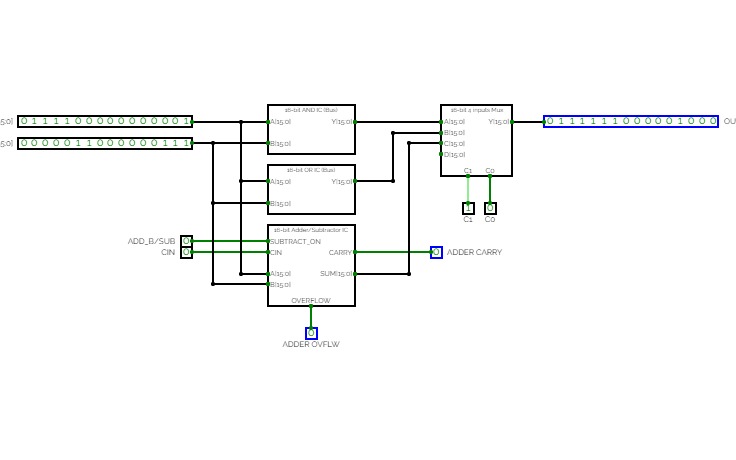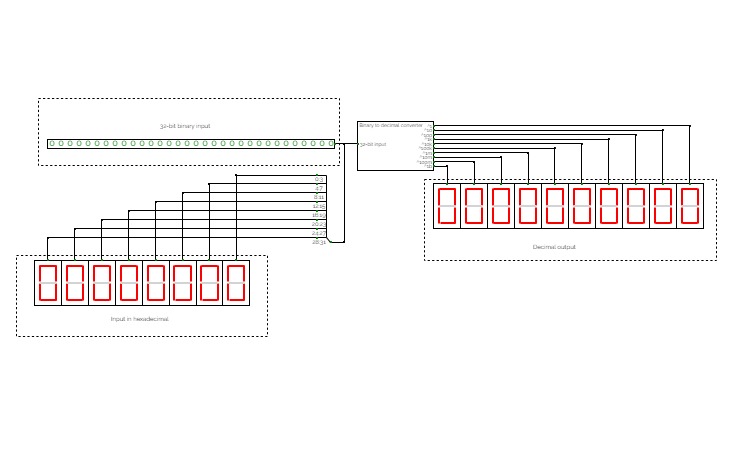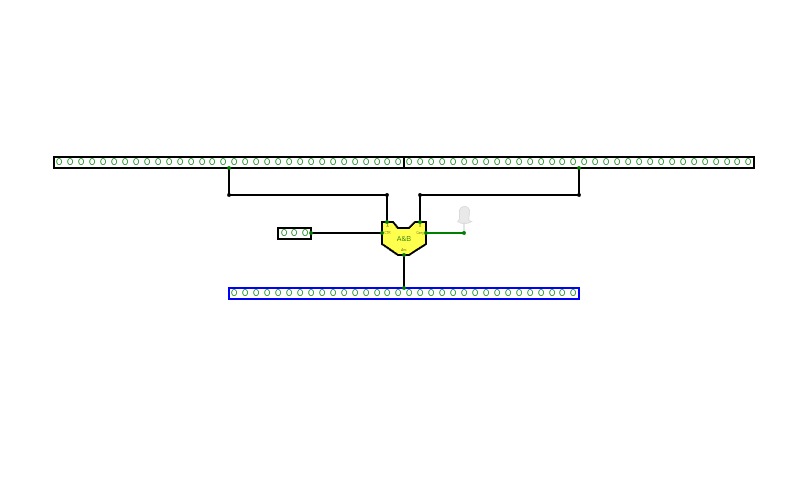pixy
pixy is a simple 32-bit processor with twelve instructions.
pixy can...
- be easily programmed using this assembler.
- support conditional instructions.
- access between 2 and 8 MB of RAM.
here are the instructions:
- add <rn>, <rs | value>
- sub <rn>, <rs | value>
- and <rn>, <rs>
- or <rn>, <rs>
- xor <rn>, <rs>
- not <rn>
- b <value>
- mov <rn>, <rs | value>
- load <rn>, [<rs>]
- sto <rs | value>, [<rn>]
- test <rn>, <rs>
- stop
arrangement:
- top left: clock in
- middle left: data in
- bottom left: input enable
- top right: address out
- middle right: data out
- bottom right: output enable
connecting to pixy:
- pick a device you'll be using to store programs and data, i.e. RAM.
- link data in to RAM's data output through a tristate.
- link data out to RAM's data input through a tristate.
- link address out to RAM's address input.
- link clock in to an oscillator.
- link input and output enables to the tristates.
when the clock starts, the processor will try to execute any instructions found at address 0x0000.
internals:
- the CU uses microcode stored in an EEPROM to implement the instruction set.
- information is transferred between components using a data bus which is wrapped around the circuit.
- programs can access four general purpose registers and RAM. They can also talk to any peripherals connected via memory mapping.
- a FIN signal is used to mark the end of an instruction and save clock cycles.
- conditional instructions work by triggering FIN (or not) based on ALU flags.
CSA_Lab2_Anwar
CSA_Lab2_AnwarComputer Systems Architecture
32-bit ALU, only with AND, OR, and ADDER/SUBTRACTOR.
32-bit Binary to decimal converter
32-bit Binary to decimal converterIt just converts binary to decimal
32 bit decimal display
32 bit decimal displayUses the divide by ten algorithm.
32 bit divider by sjp4.
extentions: none
single cycle execution,
comparator a mix of these designs:
https://circuitverse.org/users/49594/projects/compare-a8bfbb20-bc4c-447e-8300-5e0bd31a5282
shift units stolen from this design
https://circuitverse.org/users/233415/projects/risc-v-32-bit-computer-rv-32i-user-mode













